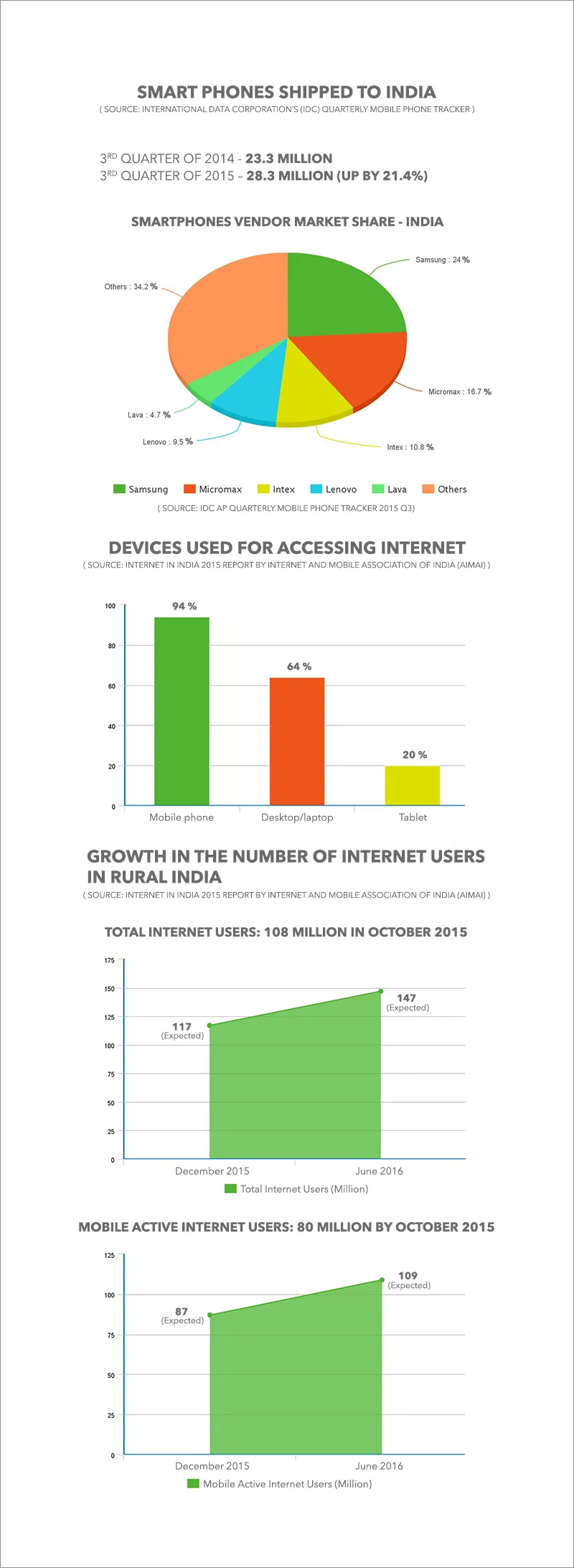4G device shipments zoom up, but will internet startups benefit?

It seems the many ads telling Indian consumers ad nauseam to get 4G is actually working. A report published earlier this month by International Data Corporation (IDC) revealed that one out of three smartphones shipped in India in the third quarter of 2015 are 4G enabled. While internet startups could benefit from this growth, poor network is still a concern.
IDC’s Quarterly Mobile Phone Tracker states that over 28 million smartphones were shipped to India in the third quarter of 2015, an increase of over 21 per cent for the same period last year. Shipment of 4G devices saw a three-fold increase compared to the previous quarter.
Entrepreneurs and experts believe this will help push growth further for internet-based companies. “4G will probably help metros in the next two years. But the real change will be when 4G gets out of the urban rich and goes out to tier II and III cities,” says Sujayath Ali, Co-founder of web and app-based fashion startup Voonik.
At the moment Airtel 4G is available only in metros and a few smaller cities. But it is expected to expand to smaller locations in the near future. Reliance Jio 4G is expected in 22 circles soon.
‘Internet in India 2015’ report by Internet and Mobile Association of India (IAMAI) states that for over 60 per cent of internet users, the mobile phone is the primary device to access internet. “We are coming to the point where smartphones may well be the first and possibly the only computing device with which rural India can gain access to internet” says Karthik J, Senior Market Analyst, Client Devices at IDC.
About 50 per cent of Voonik’s user base is already from smaller cities and towns. This despite issues like poor connectivity. A study by Ericsson earlier this year, across urban households, found that 63 per cent of mobile users face issues like voice drops, connection breaks, inconsistent speed and no availability of 3G. In non-metro India these infrastructure issues are more acute.
Shan M Hanif, Co-Founder of Trivandrum-based online grocery store Kada, says that 3G is extremely unreliable in smaller cities. He believes that cheaper smart phones can boost e-commerce if internet penetration increases. With better connectivity, he says, more people will start using smartphones and get exposed to more apps.
The price of 4G is also a detrimental factor, according to Lalit Bhise, Founder-CEO, Bizom, an app-based B2B marketplace for distributors and retailers in FMCG. “My business revolves around 15,000 app users who want cost-effective solutions – like unlimited data for Rs 200. But there are typically caps on data in 4G, so it is not very cost-effective,” he says. Bizom has almost equal number of customers in rural and urban areas, but most of the rural customers use 2G. “Today our devices are 4G-compatible, but we need innovations for longer battery life. Otherwise all these services provided through apps become inaccessible,” Lalit adds.
The increase in sales and shipments of smartphones and of 4G-enabled devices points to the growing market that is available for internet-based consumer businesses. But as long as infrastructural problems of connectivity remain internet startups will not be able to reach their full potential.








